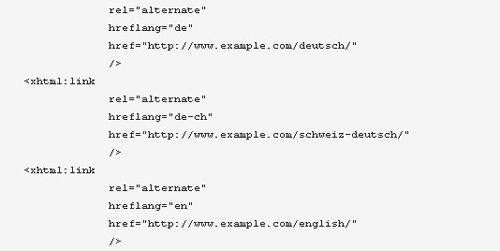Hreflang is one of the latest buzzwords to hum recurrently in the challenging and thriving arena of search engine optimization. HTML Hreflang is accredited a lot for its capacity of specifying link elements as well as the language of various linked resources. SEO service providers in numerous corners of the earth are showing extended levels of interest towards it as it offers prominent advantages that pertain to TLDs (geo targeted). It is evident that the significance and the need of the language codes are increasing exponentially. Let’s take a scrutinizing eye on the nitty-gritties related to Hreflang to fathom out why it is considered a big thing in the SEO parlance.

The essence of hreflang
Hreflang is valued prodigiously as a language code. This particular language code behaves amicably with specific doc types such as HTML 4.01 transitional, 4.01 frameset as well as HTML 4.01 strict. If you make a foray into the fundamentals of hreflang you are going to unfurl that it is it is a short code basically consisting two letters. Apart from specifying the language used in linked documents the code also comes handy in shape of strengthening the data transformation procedures, code generation processes, report rendering, eclipse integration as well as data mapping procedures.
The significance of hreflang
From SEO point of view, Hreflang does make a grade by improving the efficiency of web pages in relation to linked documents. If you have to make it sure that your content gets more TLD centric then you are sure to elicit rave benefits out of this particular language code. You can use this particularly helpful code to get your web pages translated as well as integrating valuable info such as contact numbers of key personnel, shipping information, pricing details etc. If you have eyes for Google algorithms then you are bound to mull over the significance that this particular code holds. With the help of Hreflang you can expect to make the content of your web based interfaces quite legible and relevant to people in various language groups.
How you should implement hreflang
You need to be very careful when it comes to the issue of making use of hreflang. If you have to elicit the right benefits out of this particular code you should make it a point that you are going to integrate proper HTTP headers, site maps as well as efficient head elements within your web pages. The proper way of inserting the head elements or the link elements into a web page is rel=”alternate” hreflang=”x”. Insertion of the link attributes happens to be an integral part of implementing hreflang and you need to be on your toes while positioning the link attributes. In this regard, you should bear it in mind that you have to be immaculate with the use of head attributes.
Hreflang and XML sitemaps

Owners of multinational as well as multilingual sites make it a point that they are going to keep a sharp focus on integrating the powers of Hreflang as well as XML sitemaps. According to erudite industry experts as well as webmasters proper integration of Hreflang as well as XML sitemaps are going to cast a positive impact on a particular site. It is figured that professionals can make it a point to integrate thousands of codes in webpages. Proper integration of XML sitemaps these language codes become more effective as the lines get reduced to a great extent. Combined usage of Hreflang as well as XML sitemaps have been figured out to be quite popular in countries like Switzerland, Belgium as well as Canada.
Designating a particular language as well as making entries to sitemaps become a breeze if you are too meticulous about the way you are going to handle the sue of the code language. The integration comes handy to you when you are looking to create country specific multilingual homepages. In this regard, it is highly recommended that webmasters as well as site owners should keep an eye on code bloats as well. With proper usage of code bloats URL numbers can be significantly reduced.




